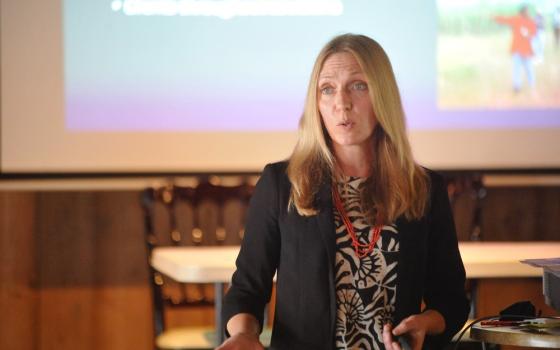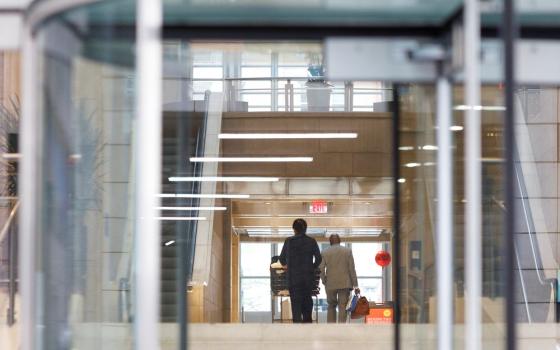All terror attacks are horrific, but ones that target people at worship are particularly so. Places of worship and people worshipping have historically been an unspoken red line for acts of violence. Ask Palestinians about Jewish terror attacks, and they will invariably refer to Baruch Goldstein's 1994 massacre of 29 Muslim Palestinians at prayer in the Cave of the Patriarchs in Hebron. This past week, the red line was crossed yet again when two Palestinians from East Jerusalem butchered five Jews at a Jerusalem synagogue.
For the first time, the Israeli-Palestinian conflict is escalating from a dispute over rival Israeli and Palestinian nationalisms into a struggle between Jews and Muslims over the future of Jerusalem and especially the Temple Mount. Competition on the basis of religion will make everything more intractable.
"When you bring the religious dimension, it absolutizes the conflict -- you can divide land, you can divide security, but the sacred is indivisible," Moshe Halbertal, a philosophy scholar at Hebrew University, told The New York Times. "And it also globalizes the conflict, because it's every Muslim, it's not anymore an Israeli-Palestinian conflict."
The Temple Mount -- or Noble Sanctuary, as Muslims call it -- is sacred to both traditions. It was the site of Herod's Second Temple. Jews still worship at the Western Wall, the most visible remnant of the ancient structure, and Israeli archeologists have explored the understructure, to the alarums of Muslim authorities.
There is a fear that Jewish and evangelical radicals might blow up the structure to level the Muslim shrines and make room to build a third temple in anticipation of the coming of the Messiah. Such fears reached a peak in 2000, and novelist Robert Stone imagined such a conspiracy in vivid detail in his Damascus Gate.
The Dome of the Rock, the third holiest shrine in Islam, commemorates the Prophet Muhammad's ascent to heaven in a dream. The Waqf complex includes schools, courts, administrative offices and homes. On Fridays, the park-like esplanade fills with male worshippers, though in times of unrest, Israel restricts access to men over 40 to prevent attacks on Jewish worshippers assembled below at the Western Wall.
Westerners might join St. John Paul II in thinking of Jerusalem as a symbol of all "humanity's encounter with the divine," but such universalism underestimates the traditional attachment of Middle Eastern believers to their holy places.
On taking the Temple Mount in 1967, Israeli Gen. Moshe Dayan, sensitive to those sentiments and in the face of widespread euphoria in Israel, ordered the Israeli flag struck and restricted the access of Jews to the esplanade atop the site. Since then, as a rule, access to the plaza has been controlled by Israeli police and soldiers, but the entire Al-Aqsa complex has been administered by Muslim Waqf, or trust, under the patronage of the king of Jordan.
The holy mountain has been a source of contention over the years, most recently when Ariel Sharon, then leader of the Likud party, appeared at the Noble Sanctuary on Sept. 28, 2000, in the company of 1,000 police and military. His visit provoked the outbreak of second Palestinian intifada. As we reported in last week's blog, the most recent series of provocations came with the visits of various Knesset members and the proclamations of governing coalition members that Israeli sovereignty over Jerusalem ought to be extended to the holy mountain.
Muslim fears over the expropriation of Al-Aqsa are understandable. A partial sharing of the Cave of the Patriarchs in Hebron has now become a 50/50 arrangement. A couple of years ago, Israel also announced a policy turning secondary Franciscan holy sites, beginning with Mount Tabor and Capharnaum, into national parks. It has not been implemented, but Israel's willingness to encroach on others' shrines was made clear.
In the case of the parks, the rationales seem to have been not religious or nationalistic, but commercial and touristic. In the case of the Haram al-Sharif, the reasons are religious and nationalistic: religious because the site touches on the central narrative of both peoples; mationalistic because it lies at the heart of each peoples' claim to Jerusalem as its capital.
But the Haram is more than a symbol of Palestinian nationalism; it is sacred for all Islam. In today's tumultuous religious-political world, a conflict over the holy mountain could launch a truly apocalyptic struggle.
[Jesuit Fr. Drew Christiansen is former editor of America magazine and a professor of ethics at Georgetown University. Ra'fat Aldajani is a Palestinian-American writer and commentator.]




